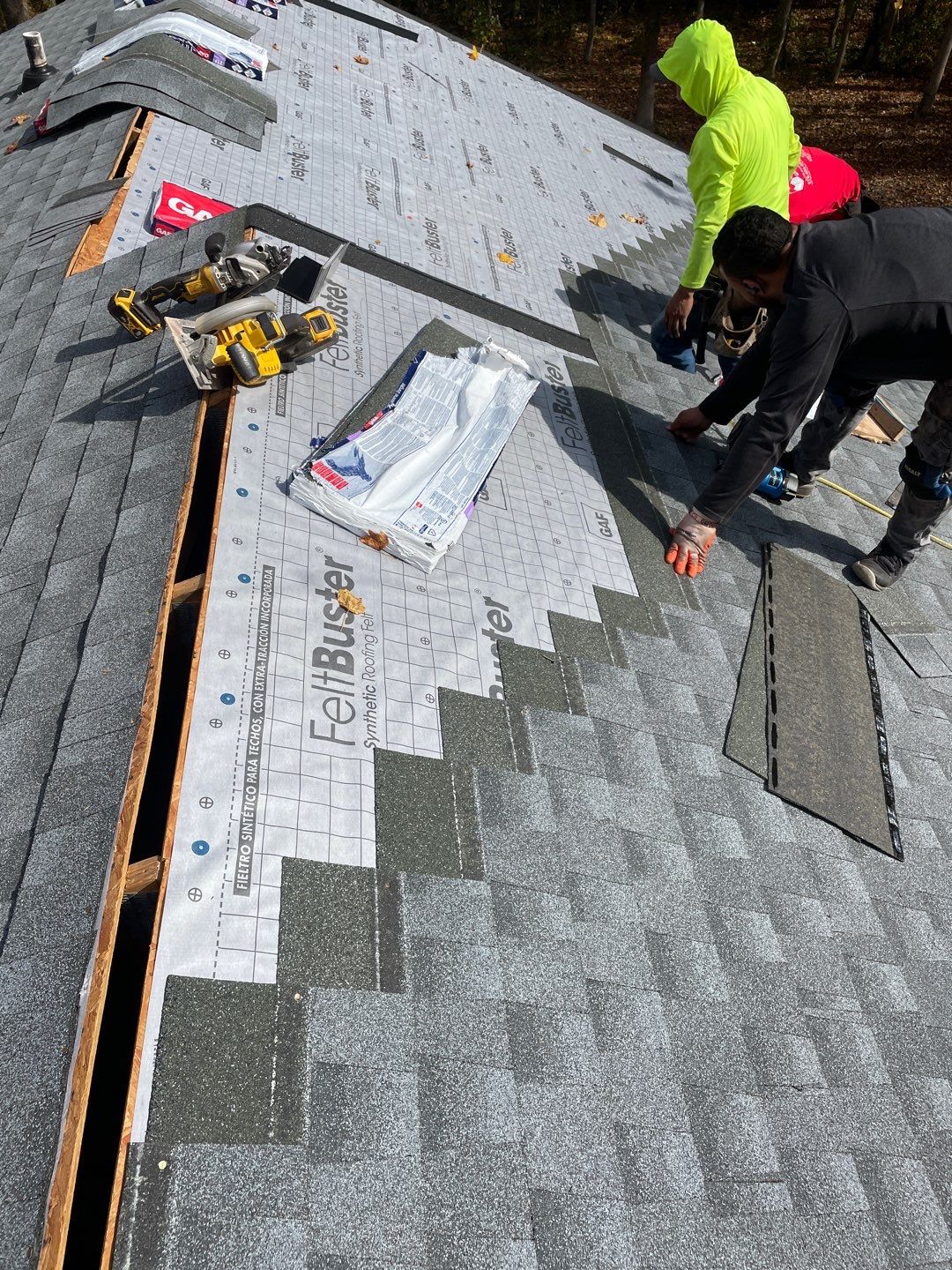The Benefits of Working with Gainesville FL Roofing Companies
Wiki Article
Best Practices for Ensuring Correct Roofing Air Flow
Making sure appropriate roof covering ventilation is crucial for the longevity and efficiency of a roof. A well balanced consumption and exhaust vent proportion, generally 1:300, plays a pivotal duty, with intake vents ideally placed at the reduced edge of the roofing system for amazing air entry and exhaust vents at the optimal for warm air departure. Regular inspections to identify clogs and maintain clear airflow are critical. Keeping insulation away from vents is crucial to avoid air flow constraint. Comprehending these foundational components sets the stage for more thorough insights right into installment and maintenance methods that can substantially improve your roof's performance.Understand Air Flow Fundamentals
Effectively comprehending ventilation basics is necessary for making sure the durability and effectiveness of roof covering systems. Reliable ventilation alleviates wetness accumulation and temperature level extremes in the attic, both of which can lead to substantial structural damage in time. A well-ventilated roofing system helps in avoiding common concerns such as mold and mildew development, wood rot, and ice dams, which can endanger the honesty of the roof covering products and the underlying structures.The primary goal of air flow is to facilitate the movement of air, enabling a regular exchange between the indoor and outside settings. This balance is attained via a mix of intake and exhaust vents that function with each other to preserve optimal air movement. Consumption vents, normally located along the soffits or eaves, permit fresh air to get in the attic space, while exhaust vents, frequently located at or near the roofing system ridge, enable warm, moist air to escape.
Trick aspects influencing the efficiency of roofing system air flow include correct placement, adequate sizing, and ensuring that both intake and exhaust vents are unhampered. Routine inspection and maintenance are critical to determine potential blockages, damages, or ineffectiveness in the air flow system, consequently protecting the roof covering's performance and resilience.
Kinds Of Roofing Vents
Roofing system vents play an essential duty in preserving effective attic room ventilation and, by expansion, the general wellness of the roof. Numerous sorts of roofing vents are available, each with special benefits tailored to certain roofing requirements. Ridge vents, as an example, are set up along the roof covering's top, permitting warm, damp air to run away from the attic. They use continuous ventilation and blend effortlessly with the roofline, making them both effective and cosmetically pleasing.
Soffit vents are mounted under the eaves and operate in tandem with roofing vents to guarantee a balanced consumption and exhaust system. By allowing cooler air to go into from below, soffit vents assist in the expulsion of hot air via upper vents. Gable vents, located on the exterior walls of the attic room, offer another efficient remedy, especially in homes with gable roofings.
Analyze Your Current Air Flow

Next, take into consideration the age and condition of your roof products and ventilation parts. Older systems may not comply with existing building ordinance or might have weakened gradually, reducing their performance. Conduct a thorough examination to recognize any type of indications of damage, such as rust, damages, or gaps that can endanger the system's performance.
In addition, determine the attic temperature level and moisture degrees. High temperatures and humidity can show poor air flow.
Installation Best Practices
Efficient installment of roofing air flow systems is paramount for guaranteeing ideal performance and longevity. Proper setup begins with understanding the particular ventilation needs of the building and the roof it covers. This entails determining the right proportion of consumption to exhaust vents, usually sticking to the 1:300 guideline, which stipulates one square foot of ventilation for every 300 square feet of attic floor space.
Consumption vents must be set up at the roof covering's lower edge, often in the soffits, to permit awesome air to go into. Exhaust vents, on the various other hand, should be mounted near or at the roofing system's height to facilitate the leave of warm, moist air.
Seal all vent links thoroughly to avoid air leaks and potential water infiltration. Usage high-quality materials and comply with maker guidelines to ensure sturdiness and effectiveness. In addition, incorporating ridge vents with baffles can considerably improve airflow effectiveness by preventing wind-driven rain and snow from entering the attic.
Inevitably, specific installment of roof covering ventilation systems alleviates prospective problems such as mold development, ice dams, and architectural damages, making sure the roof covering's stability and the building's overall health.
Routine Upkeep Tips
Consistency in upkeep methods is fundamental to ensuring the long-lasting performance of roof air flow systems. Throughout these examinations, make sure that vents are free of debris, nests, and other blockages that could hamper air movement.
Make use of a soft brush or a resource vacuum to get rid of dirt and particles from intake and exhaust vents. Be careful not to damage the air vent displays or louvers throughout the process.
Proper insulation is similarly vital. Ensure that attic insulation does not block the vents, as this can badly limit airflow. If any kind of insulation has actually changed or settled, rearrange or replace it to preserve a reliable obstacle.
Finally, change any type of harmed or missing out on parts without delay. Busted vents, cracked roof shingles, or scrubby flashing can all add to insufficient air flow and needs to be dealt with right away. Routine maintenance makes sure that the other roofing ventilation system functions optimally, thus expanding the life-span of the roof covering itself.
Final Thought
Guaranteeing proper roofing ventilation is paramount for keeping the effectiveness and longevity of a roofing system. Adherence to the 1:300 consumption and exhaust vent ratio, paired with the strategic positioning of vents, is vital. Regular semiannual inspections, particles cleaning, and ensuring insulation does not block air movement are vital practices. Applying these best practices will cultivate a well-ventilated roof, thus mitigating potential issues associated with moisture build-up and too much warm, eventually extending the roof covering's life-span.A balanced consumption and exhaust air vent proportion, typically 1:300, plays a crucial role, with consumption vents ideally put at the reduced side of the roofing for great air access and exhaust vents at the top for warm air leave. Intake vents, commonly situated along the eaves or soffits, enable fresh air to enter the attic area, while exhaust vents, often positioned at or near the roofing ridge, make it possible for warm, humid air to run away.
Soffit vents are set up under the eaves and job in tandem with roof covering vents to ensure a balanced consumption and exhaust system. By allowing cooler air to go into from below, soffit vents assist in the expulsion of warm air with upper vents. Adherence to the 1:300 intake and exhaust vent ratio, coupled with the critical positioning of vents, is essential.
Report this wiki page